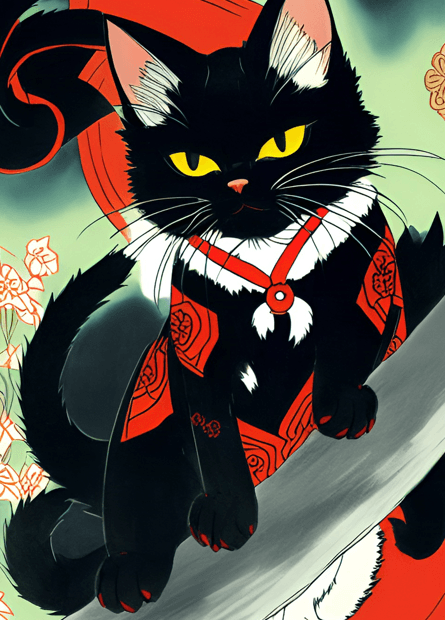If you’re familiar with Japanese mythology, you may have heard of the mysterious Bakeneko. These mythical creatures are said to be shapeshifting cats that can transform into humans and wreak havoc on unsuspecting people.
But where did the legends of the Bakeneko come from, and what do they represent in Japanese culture? Read on to learn more about the mischievous mythical cats.
MORE LIKE THIS: All about Oni: Evil Demons from Japanese Folklore
Origins of the Bakeneko
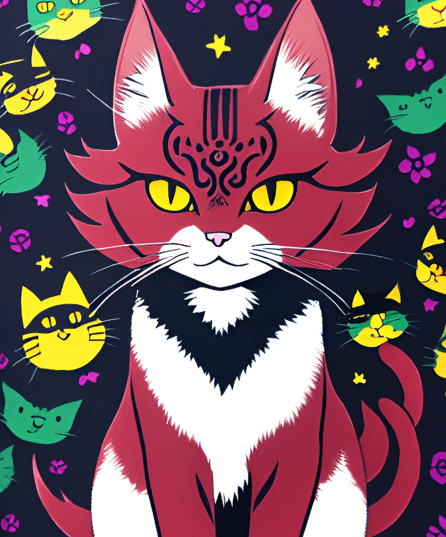
The origins of the Bakeneko can be traced back to ancient Japan, where cats were highly revered and seen as sacred animals. However, as time went on, cats began to be associated with the supernatural and were often depicted as creatures with magical powers.
Over time, the legends of the Bakeneko evolved and became more elaborate. In some stories, Bakeneko are said to be able to manipulate the dead, while in others they are depicted as vengeful spirits seeking revenge on their human oppressors.
One of the most famous legends involving the Bakeneko is the Nabeshima Bakeneko Disturbance. This was a series of strange events that occurred in 17th century Japan in the town of Saga. According to legend, a wealthy merchant in the town had a beloved pet cat that died, but then returned from the dead as a Bakeneko. The creature is said to have terrorized the town, causing fires, making strange noises, and even attacking and killing people. These events have remained a subject of fascination and fear for many years afterward.
The Appearance of the Bakeneko

How the Bakeneko look can vary depending on the story or region, but they are typically portrayed as large cats with long tails and the ability to speak like humans. Some stories describe them as having human-like features such as hands, feet, or even clothing.
In their human form, they are often depicted as beautiful women with cat-like features such as long, pointed ears and a tail.
In their cat form, Bakeneko are said to have unusually long tails and are able to speak like humans. They are also said to possess supernatural abilities such as shape-shifting, levitation, and even control over the elements.
Characteristics of the Bakeneko

So what exactly is a Bakeneko? According to legend, these creatures are able to transform into humans by standing on their hind legs and performing a ritual dance. Once transformed, they can use their powers to manipulate humans and cause mischief.
Some of the powers that are attributed to the Bakeneko are shapeshifting, possessing humans, speaking to humans, controlling the dead, and causing illness to humans by licking their food. While the Bakeneko are often depicted as mischievous, they are also seen as dangerous creatures capable of causing harm.
They are often confused with another type of Yokai, the Nekomata, though they are distinguishable by a few factors. For instance, the Bakeneko have one long tail, whereas the Nekomata are believed to have a two, or a forked tail.
Where do the Bakeneko Live?
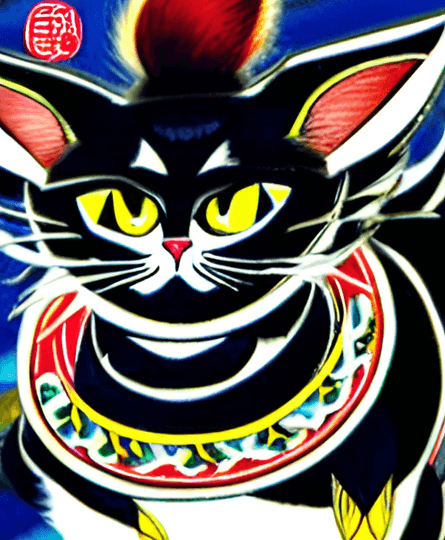
In Japanese folklore, Bakeneko are believed to live in abandoned homes, temples, and graveyards, as well as in forests and other isolated places. They are said to prefer dark and quiet places where they can go unnoticed and practice their magic undisturbed.
Some legends also suggest that Bakeneko live in the homes of people who mistreat or neglect their cats, and that they are able to take revenge on their behalf by transforming into human form and causing mischief or harm.
Symbolism and Meaning
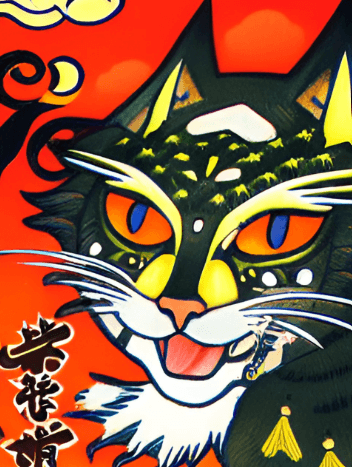
So what do the Bakeneko represent in Japanese culture? Some scholars have interpreted them as a symbol of the power of women in a patriarchal society. In many stories, Bakeneko are depicted as female and are able to use their powers to subvert the male-dominated social order.
Others have seen the Bakeneko as a symbol of the dangers of the supernatural world and the importance of respecting the spirits of the dead. In traditional Japanese culture, it was believed that the spirits of the dead could become vengeful if they were not properly honored and cared for.
Similar Mythical Beings to the Bakeneko
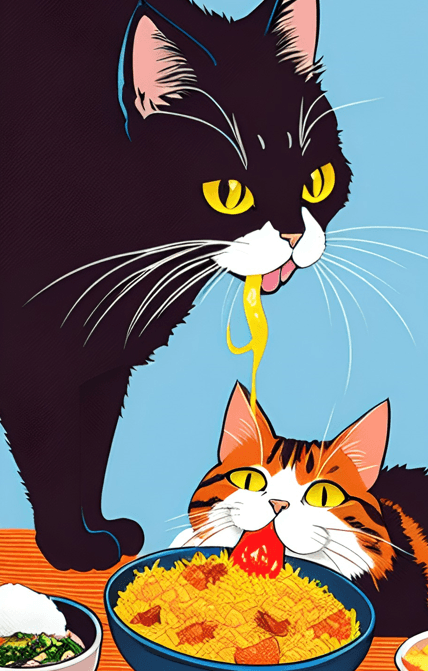
Within Japanese mythology, there are several other creatures that share similarities with the Bakeneko. One such creature is the Nekomata, which is also a shapeshifting cat that is able to transform into a human. Like the Bakeneko, the Nekomata is said to be mischievous and dangerous, and is often depicted as a malevolent spirit that preys on humans.
Another similar creature is the Kasha, which is a demon that is said to appear as a cat-like creature with the ability to steal the corpses of the recently deceased. The Kasha is believed to be a harbinger of death and is often associated with funerals and cremation ceremonies.
Get in Touch
Do you know any stories about Bakeneko? Or maybe we missed an important detail about the mischievous cat yokai. If so, let us know in the comment section below!
If you enjoyed reading this, you might also like our article about yuki onna, Japanese folklore’s snow woman.
For enquiries, contact me at richard@mythologyplanet.com
For more about the Bakeneko, check out the YouTube video below by ManekiNeko:
